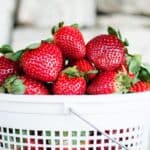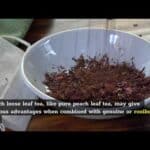Steep Tea, How To Do It?
A wonderful cup of tea may help you beat the winter chill…
…rejuvenate throughout the day, or unwind at night. Tea is brewed by steeping it in hot water. The process of removing taste and health-promoting chemicals from the solids used to produce tea is known as steep tea. This article teaches how to steep tea properly so that you may have a beautiful cup every time.
True or Herbal Tea
Tea is not all the same, and steeping procedures differ based on the variety you’re brewing. True teas, which include black, green, oolong, and white tea, are derived from the Camellia sinensis plant. The tastes, hues, and antioxidant content of the leaves vary depending on how they are oxidized before drying. True teas are offered in two forms: loose leaves and tea bags.
Tisanes, or herbal teas, are not real teas. They are instead infusions or decoctions prepared from the roots, leaves, stems, or blossoms of herbs and plants like hibiscus, peppermint, rooibos, chamomile, turmeric, or ginger. Herbal teas are frequently made using dried herbs, but they can also be made with fresh ingredients. The fundamental steeping process is the identical for both varieties, but the amounts required to make a cup differ depending on whether the components are dried or fresh. The amount of time steeped and the temperature of the water required to extract the finest tastes might also vary.
What You Need To Concern About Steep Tea
Start With Fresh Ingredients
If you’re creating a herbal tea with fresh components, such as herbs, ginger, or turmeric root, utilize them as soon as they’re cut or purchased. When stored dry in an airtight container and away from direct light, dried tea leaves have a long shelf life. Extended storage durations, on the other hand, may have a detrimental impact on the quality, flavor, and fragrance.
Catechins, theaflavins, and thearubigins are polyphenol antioxidant chemicals found in true teas. They are responsible for many of the health advantages of tea, although they deteriorate with time. Researchers who studied the antioxidants in green tea kept at 68°F (20°C) discovered that catechin levels had decreased by 32% after 6 months. The flavor of your tea is also affected by the quality of your water. Tap water that is rich in minerals or has been treated with chlorine may give an off-flavor, so when brewing, use fresh, cold, and filtered water.
Time and Temperature
Pour boiling water over your ingredients and let them aside for a few minutes to steep tea. It’s not an exact science, and you should experiment to find out what tastes best for you. Having said that, here are some broad recommendations. A higher temperature or a longer steeping period isn’t always preferable. Green tea prepared this manner, for example, scored worse on color, taste, fragrance, and general acceptance in tests. If the steep time is too short, you will not extract enough tastes and antioxidants.
Researchers examined the total quantity of polyphenol antioxidants extracted from black tea with time and discovered that it required 6–8 minutes to obtain the maximum amount. It’s also worth noting that the caffeine concentration rises with steep time. Caffeine levels differ among true teas. A 6-ounce (178-ml) cup of black tea has 35 mg of caffeine, whereas a 6-ounce (178-ml) cup of green tea contains 21 mg. Steeping tea for an extra minute boosts caffeine level by up to 29 %, while using boiling water raises caffeine content by up to 66 %.
Hot Steep Tea
The easiest method to make a great cup of tea is to steep tea in hot water. Here are some recommendations for the optimal steep time and temperature for different popular teas. Green tea is often the most delicate, but black and herbal teas are more forgiving in terms of temperature and steeping duration.
Cold Steep Tea
If you intend to drink your tea cooled, cold steeping may be the best option. When tea is steeped in cold to room temperature water, it becomes less bitter and more fragrant, with a higher antioxidant content. However, the lower the steeping temperature, the longer the brewing time, which may be up to 12 hours in most situations.
According to one research, steeping for 12 hours at 40°F (4°C) removes and maintains more polyphenols than steeping for 3–4 minutes in hot water. The study also discovered that steeping for 3–5 minutes at 175°F (80°C) followed by adding ice resulted in the same flavor and antioxidant content as the 12-hour cold steep tea procedure, making it a fast alternative.
Was this helpful?
Hi there! I’m a food enthusiast and journalist, and I have a real passion for food that goes beyond the kitchen. I love my dream job and I’m lucky enough to be able to share my knowledge with readers of several large media outlets. My specialty is writing engaging food-related content, and I take pride in being able to connect with my audience. I’m known for my creativity in the kitchen, and I’m confident that I can be the perfect guide for anyone looking to take their culinary journey to the next level.








